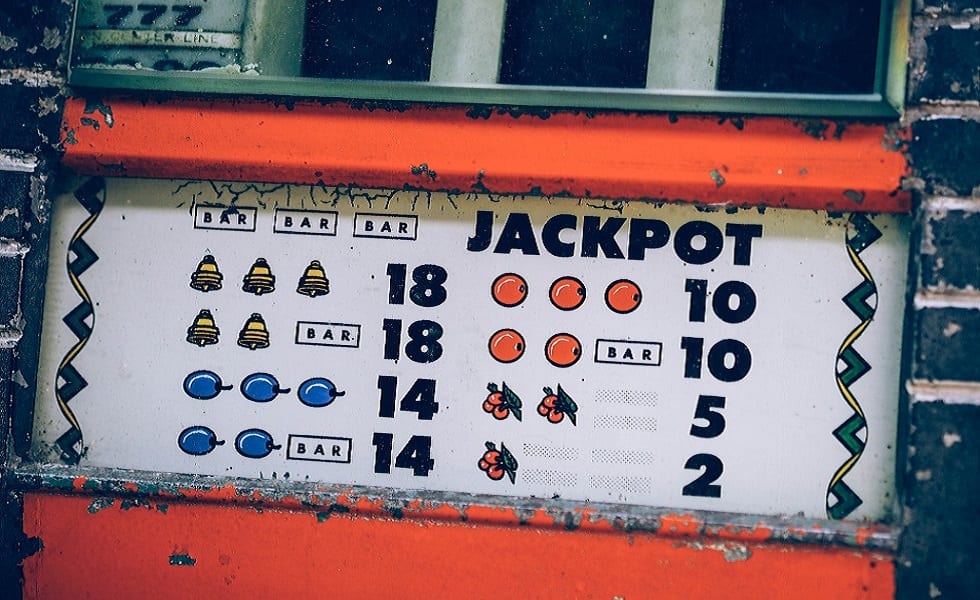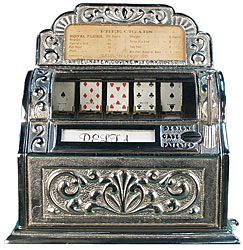Charles Fey
Posted By admin On 09/04/22View the profiles of people named Fey Charles. Join Facebook to connect with Fey Charles and others you may know. Facebook gives people the power to. Plaque marking the location of Charles Fey's San Francisco workshop, where he invented the three-reel slot machine. The location is a California Historical Landmark. Sittman and Pitt of Brooklyn, New York developed a gambling machine in 1891 that was a.
Slots machines have been the most popular games in casinos for decades. They’ve only gotten more popular thanks to technological advancements.
Today’s slots feature many winning possibilities, exciting features, fun animations, and excellent graphics. They also boast big jackpots and bonus prizes.
Slots have come a long way since Charles Fey developed the Liberty Bell slot in 1895. Fey is often credited with being the inventor of the slot machine.
In truthfulness, Fey didn’t actually invent slots. He instead used existing ideas to advance these games and make them more popular.
Where did Fey draw his inspiration from? I’m going to discuss more on the man himself along with where he got the idea for slot machines.
Who Was Charles Fey?
Charles Fey was born as “August Fey” in 1862. He’d later change his name to Charles, because he didn’t like people calling him “Gus.”
Fey grew up in the German state of Bavaria and began manufacturing farm tools as a teenager. This trade was important to Fey’s life, since it taught him mechanical skills that he’d use later on.
In 1877, Fey moved to France in hopes of finding more opportunities than Bavaria offered. He helped manufacture intercom equipment for three years in France.
In 1890, Charles moved to Great Britain and began working for a company that made nautical equipment. By the time he was 23, Fey moved to the United States and settled down in San Francisco. He’d live here for most of his remaining life, aside from a short trip to Mexico.

Charles started working for Electric Works, where he served as an engineer. Eventually, he and a coworker, Theodore Holtz, left Electric Works to start their own company.
Holtz’s and Fey’s company produced electrical equipment and telephones. Thanks to all of these mechanical-related jobs and ventures, Fey had all the experience he needed to later produce a slot machine.
Where Did Fey Get the Idea for Slot Machines?
Charles Fey didn’t learn how to invent slots based on divine intervention. Even with his immense mechanical skills, he still needed inspiration for what would become the greatest gambling machine of all time.
A Brooklyn-based company named Sittman and Pitt actually produced the first model for a slot machine. In 1891, they developed a gambling machine that features five drums and 50 card faces.
This machine was meant to be an automatic poker game. It required players to insert money, pull a lever, and send the drums spinning.
Not long after Sittman and Pitt’s invention, slots began paying out in coins. But these games weren’t necessarily slot machines in the original sense.
The first coin-paying gambling machine saw inserted coins fall onto a balance scale. Gamblers would be paid if their coin caused the scale to tip and deliver coins.
Other coin-paying games featured a display window and spinning indicator. The latter would stop on a color, number, or picture and determine prizes accordingly.
Fey Advances Slot Machines with the Liberty Bell
The groundwork for slots had been laid long before Fey came along. But he saw where gambling machines could be improved and eventually designed something totally revolutionary.
He needed to look no further than his colleague, Gustav Friedrich Wilhelm Schultze, for inspiration. The latter had developed a slot that contained an automatic payout feature.
Fey went to work on his own version of the slot in 1894. He built his first machine in his San Francisco basement.
The next year, he developed the “4-11-44.” This game proved so profitable that Fey had to quit his company just to begin producing more machines.
He created the “Card Bell” in 1989. This was the first three-reel slot to deliver automatic payouts. It featured a handle that was used to spin the reels and determine prizes.

In 1899, Fey produced his greatest invention yet in the Liberty Bell slot machine. This game featured bells, horseshoes, and card suitmarks on the reels. Three bells in the payline delivered the top prize.
The Liberty Bell quickly became a hit across saloons in San Francisco. He produced and distributed more than 100 of these machines throughout San Francisco.

Fey made quite a bit of money off his invention. However, he wasn’t able to patent his Liberty Bell design due to restrictive gambling laws in San Francisco.
The lack of a patent allowed other companies to steal Fey’s format. Most notably, the Mills Novelty Company used the Liberty Bell template to distribute numerous slot machines across Chicago.
San Francisco eventually banned slots in 1909. Politicians and purists had grown tired of the thousands of slot machines operating within the city.
Fey and other companies started designing gambling machines that didn’t accept coins. Instead, players would pay the attendant or bartender directly to spin the reels.
These games helped keep the slot machine vibe alive in San Francisco to some degree. But they never attained quite the same popularity.
Why Does Fey Get the Credit for Inventing Slot Machines?
Charles Fey was far from the first person to think of slots. Sittman and Pitt developed the first slot machine in 1891, three years before Fey even got started.
However, the first so-called slot machines didn’t really look like what we think of as slots today. Instead, they featured rudimentary designs that involved balance scales, poker, or spinning indicators.
These types of games were necessary to advance gambling machines. However, the same designs didn’t survive for long.
Fey’s three-reel slot machines, however, did withstand the test of time. Even the symbols he used, including bells and horseshoes, hung around for a while.
Fey didn’t invent the slot machine. But he did invent the modern prototype that would be used in saloons and casinos for the next several decades. For that, he’s considered the father of modern slot machines.
Slots Have Advanced Greatly Since the Liberty Bell
The Liberty Bell was a revolutionary gambling concept when it was released in 1899. Mechanical slots like this would continue to populate bars and casinos up until the 1960s.
However, this decade would finally mark a major change in casino gaming. In 1963, Bally manufactured the first fully electromechanical slot.
Dubbed “Money Honey,” this game offered automatic payouts, a bottomless hopper, and a jackpot worth up to 500 coins.
Before Money Honey, attendants frequently had to stop games and refill hoppers. Most jackpots weren’t worth anywhere near 500 coins until this point either.
Money Honey quickly proved a success in the gambling world. Soon, many more electromechanical slots hit casinos.
But the true revolution in gaming didn’t happen until the advent of the video slot. In 1976, the Fortune Coin Company produced a slot that featured a 19-inch color screen and computer software for game functions.
This original design was housed in a cabinet. After receiving approval from Nevada gaming regulators, Fortune Coin Company’s first game was put inside Las Vegas’ Hilton Hotel.
Video slots have led the way ever since first being introduced in Las Vegas. They’ve now come to offer lots of exciting features and formats.
As of 1994, gamblers have also been able to enjoy real money slots at online casinos, too. Countless slot machines are available through smartphones, tablets, and computers.
Conclusion
Charles Fey may not be the true inventor of slot machines. However, he made the most important contributions to slots.
Before Fey, these games didn’t offer spinning reels. They instead utilized odd designs that quickly fizzled out. Drawing inspiration from the work that his partner, Schultze, did on the horseshoe slot, Fey embarked on a journey that saw him produce several slot machines.
Charles Fey
His most notable invention came in 1899, when he created the Liberty Bell. This three-reel game featured a smooth design and payout process. The Liberty Bell was such a hit that rival companies stole the format. Before long, San Francisco was filled with replica designs due to Fey’s inability to get a patent.
Charles Fey Wisconsin
Charles would continue making slot machines even after San Francisco banned them in 1909. However, he had to modify them to not accept coins.
Meanwhile, coin-operated slots later spread to Chicago and New York. They also began hitting Las Vegas casinos in the 1930s.
Today, video slot machines fill both online and land-based casinos. These games are far more technologically advanced than what Fey produced well over 100 years ago.
Charles Fey Biography
Nevertheless, Fey still holds a prominent place in slots history. He created the slot machine design that forms the basis of most modern-day slots.